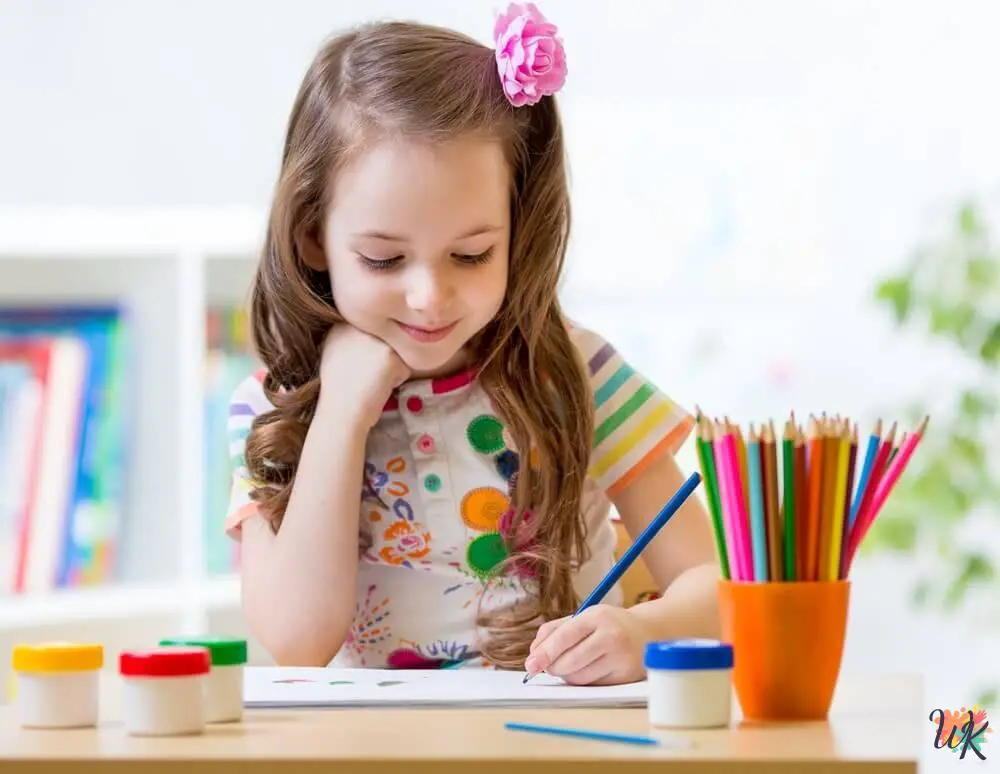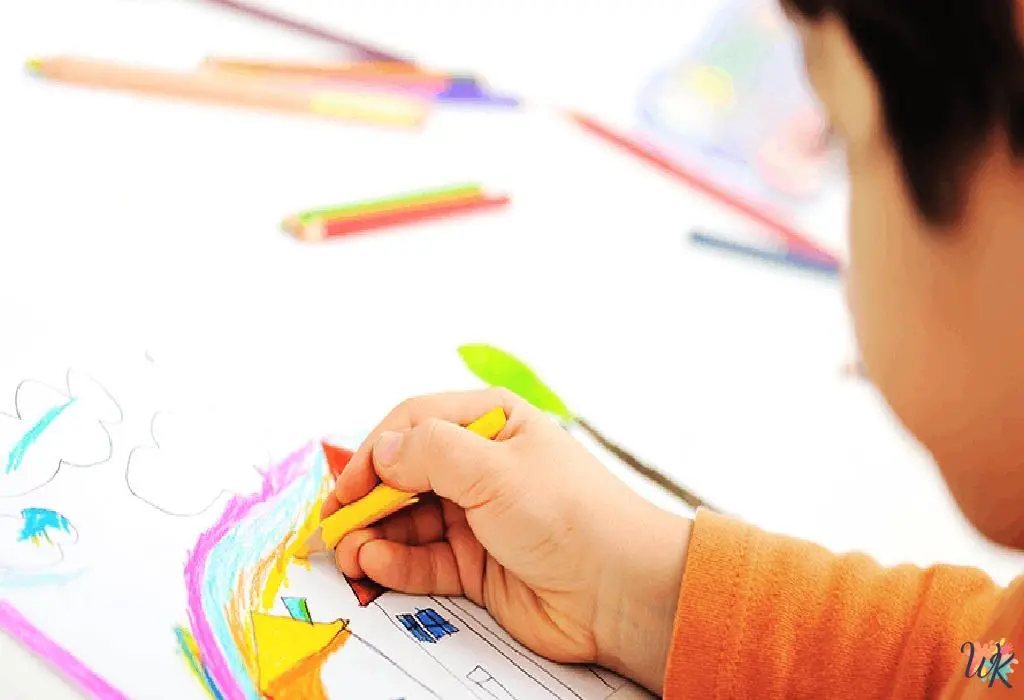In today’s digital age, where children are surrounded by screens and technology from an early age, the traditional activity of coloring pictures may seem outdated to some. However, the benefits of this seemingly simple activity go far beyond filling shapes with crayons. Coloring pictures can play a crucial role in a child’s development, fostering their creativity, cognitive skills, emotional well-being, and more. In this article, we will explore why children should learn to color pictures and how this activity positively impacts their overall growth.

The Importance of Coloring
Coloring pictures is not just a fun pastime for children; it holds significant value in their overall development. It engages their senses, encourages self-expression, and helps them explore their creativity. As children immerse themselves in the world of colors, they embark on a journey of self-discovery and learning. Let’s delve deeper into the various reasons why children should engage in this enriching activity.
Enhancing Fine Motor Skills
One of the primary benefits of coloring pictures is the enhancement of fine motor skills. Holding and manipulating crayons or colored pencils helps children develop dexterity and control over their hand movements. As they color within the lines or create intricate patterns, they refine their hand-eye coordination and strengthen the muscles in their fingers, hands, and wrists.
Stimulating Creativity and Imagination
Coloring pictures provides a blank canvas for children to unleash their creativity and imagination. It allows them to envision worlds beyond reality, explore different color combinations, and bring their unique ideas to life. Through coloring, children develop their artistic skills, learn to make aesthetic choices, and cultivate a sense of individuality.
Developing Cognitive Abilities
Engaging in coloring activities stimulates various cognitive abilities in children. They learn to identify and distinguish between colors, understand spatial relationships, and practice visual analysis. Coloring also enhances their problem-solving skills as they decide which colors to use and how to blend them effectively. These cognitive processes contribute to their overall cognitive development.
Learning Colors and Shapes
Coloring pictures serves as an effective tool for children to learn about colors and shapes. It introduces them to a wide spectrum of hues and enables them to associate colors with specific objects or concepts. Additionally, coloring within the boundaries of shapes helps them recognize and differentiate between various geometric forms, laying the foundation for future learning in math and science.
Encouraging Focus and Concentration
Coloring pictures is a beneficial activity for children as it helps them to focus and concentrate on a particular task amidst various distractions in the world. While coloring intricate designs or patterns, they develop their attention span and learn to stay engaged. This skill of sustained concentration helps them in their academic and daily endeavors.

Promoting Emotional Well-being
Coloring pictures is emotionally beneficial for children as it provides a way to express themselves creatively. Through colors and imagery, they can communicate their feelings, emotions, and experiences, which can be therapeutic, especially for those who struggle with verbal expression. Coloring empowers them with a safe, non-verbal means of communication that helps them process and manage their emotions.
Boosting Confidence and Self-expression
As children engage in coloring, they gain a sense of accomplishment and pride in their creations. Each completed picture becomes a tangible representation of their efforts, boosting their confidence and self-esteem. Coloring also encourages self-expression, enabling children to convey their unique perspectives and ideas through their artwork. This validation of their individuality further enhances their self-confidence.
Fostering Social Skills
Coloring pictures can be a collaborative and social activity, especially when children engage in it with their peers or family members. It promotes interaction, cooperation, and the sharing of ideas. When children color together, they learn to take turns, share materials, and respect each other’s choices. These social interactions contribute to the development of their interpersonal skills and the ability to work in a team.
Providing Relaxation and Stress Relief
The act of coloring pictures offers children a calming and soothing experience. It allows them to momentarily escape from daily pressures, relax their minds, and unwind. Coloring activates the brain’s relaxation response, reducing stress levels and promoting a sense of tranquility. This meditative quality of coloring helps children manage their emotions, alleviate anxiety, and find inner peace.
Integrating Technology with Coloring
While technology has become an integral part of children’s lives, it can also be combined with coloring to create a dynamic and interactive experience. Digital coloring apps and websites offer a range of tools and features that engage children in coloring activities using tablets or computers. These platforms provide a blend of traditional coloring and technological advancements, keeping children entertained while harnessing the benefits of coloring.
Coloring as a Family Activity
Coloring pictures can bring families closer together and create memorable bonding experiences. When parents or siblings join in the coloring process, it becomes a shared activity that fosters communication, laughter, and quality time. Family coloring sessions promote togetherness and create cherished memories that children carry with them throughout their lives.
Coloring as an Educational Tool
Beyond its artistic and recreational aspects, coloring pictures can be utilized as an educational tool. Educators can incorporate coloring activities into lesson plans to reinforce concepts, enhance learning experiences, and make lessons more interactive. By integrating coloring with educational content, children engage with the material on a deeper level, improving retention and comprehension.

Combining Coloring with Storytelling
Coloring pictures can be intertwined with storytelling to create a multi-dimensional experience for children. They can color scenes from their favorite stories or create their narratives through coloring. This combination of coloring and storytelling fuels their imagination, strengthens their language skills, and encourages them to explore narrative structures and character development.
Conclusion
In a world dominated by screens, it is essential to emphasize the significance of traditional activities like coloring pictures. By engaging in this timeless pastime, children enhance their fine motor skills, stimulate their creativity, develop cognitive abilities, and learn valuable lessons about colors, shapes, and emotions. Coloring pictures also promotes focus, emotional well-being, confidence, and social skills. It provides relaxation, integrates technology, and offers opportunities for family bonding and educational enrichment. So, let’s encourage children to pick up their crayons, unleash their imagination, and embark on an artistic journey filled with colors and creativity.
FAQs
Q1: Is coloring only beneficial for artistic children?
No, coloring is beneficial for children of all artistic abilities. It helps develop various skills, including fine motor skills, cognitive abilities, and emotional well-being.
Q2: At what age can children start coloring?
Children can start coloring as early as the age of two. Initially, they may scribble or make random marks, but it gradually evolves into more controlled coloring.
Q3: Can coloring help children with attention deficit issues?
Yes, coloring can be a helpful activity for children with attention deficit issues. It promotes focus, concentration, and attention to detail.
Q4: Are there any specific benefits of coloring for older children?
Yes, coloring can benefit older children as well. It serves as a relaxation technique, aids in stress management, and allows for creative self-expression.
Q5: How can parents encourage coloring in their children?
Parents can provide coloring books, art supplies, and a supportive environment. They can also participate in coloring activities with their children to make it a shared experience.with support for the PlayStation Move controller, the without first-person shooter mode.

